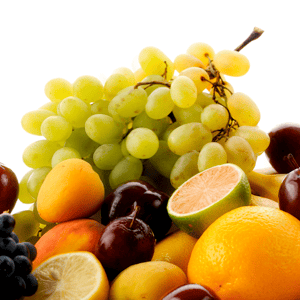Growing Fruit at Home: How to Do It
Written by Matt W (Greenhousestores) on 18th Feb 2021.
Growing Delicious Fruits at Home: A Comprehensive Guide for Beginners

Are you dreaming of plucking fresh, juicy fruits from your own garden? You're not alone! Many people believe growing fruit at home is challenging, but with the right knowledge and approach, it's easier than you might think. In this guide, we'll explore the best fruits for home gardens, essential tips for success, and how to overcome common obstacles. Let's dive in and turn your garden into a thriving fruit paradise!
Why Grow Your Own Fruit?
Before we get into the nitty-gritty of fruit cultivation, let's consider why growing your own fruit is a fantastic idea:
- Health benefits: The Centers for Disease Control and Prevention (CDC) recommends that adults consume 1.5 to 2.5 cups of fruit daily for optimal health. Home-grown fruits can help you meet this goal easily.
- Cost-effective: While there's an initial investment, growing your own fruit can save money in the long run.
- Environmental impact: Reduce your carbon footprint by cutting down on transported produce.
- Taste and quality: Home-grown fruits often taste better and are fresher than store-bought options.
- Educational: It's a great way to teach children about nature and food production.
Choosing the Right Fruits for Your Garden
The key to successful fruit growing is selecting varieties that suit your climate, space, and skill level. Here are some excellent options for beginners:
- Strawberries: Perfect for small spaces and containers
- Raspberries: Easy to grow and maintain
- Blackberries: Hardy and prolific
- Apples: Dwarf varieties work well in small gardens
- Figs: Ideal for sunny spots
- Gooseberries: Low-maintenance and versatile
- Currants: Available in red, black, and white varieties
- Honeyberries: Packed with antioxidants and easy to grow

Essential Tips for Growing Fruit at Home
- Sunlight is crucial: Most fruit plants need at least 6-8 hours of direct sunlight daily. According to the Royal Horticultural Society, sweet-tasting fruits like strawberries, peaches, and grapes thrive in sunny locations.
- Soil matters: Ensure well-draining, nutrient-rich soil. A pH test can help you determine if your soil needs any amendments.
- Water wisely: Consistent moisture is key, but avoid overwatering. Use mulch to retain moisture and suppress weeds.
- Pruning is important: Regular pruning promotes better air circulation and fruit production. The Gardening Channel offers excellent pruning guides for various fruit trees.
- Pollination: Some fruits require cross-pollination. Plant compatible varieties or encourage pollinators in your garden.
- Pest management: Use organic methods like neem oil or introduce beneficial insects to control pests. The Organic Materials Review Institute (OMRI) provides a list of approved organic pesticides.
- Harvest at the right time: Each fruit has its optimal harvest time. Research the signs of ripeness for your chosen fruits.
Growing Fruit in Limited Spaces
Don't let a small garden deter you! Here are some space-saving techniques:
- Vertical gardening: Use trellises, walls, or fences to grow climbing fruits like grapes or kiwi berries.
- Container gardening: Many fruits, including dwarf apple trees and strawberries, grow well in pots.
- Espaliered trees: Train fruit trees to grow flat against a wall to save space.
- Hanging baskets: Perfect for strawberries and some small berry varieties.
- Multi-grafted trees: These have different fruit varieties grafted onto one rootstock, saving space while providing variety.
Overcoming Common Challenges
- Bird damage: Use netting or reflective tape to protect your harvest.
- Frost protection: Cover sensitive plants during cold snaps or choose cold-hardy varieties.
- Diseases: Practice crop rotation and maintain good air circulation to prevent fungal issues.
- Limited pollination: Plant pollinator-friendly flowers or consider hand-pollination for better yields.
- Nutrient deficiencies: Use a balanced, organic fertilizer and compost to ensure your plants get the nutrients they need.
Conclusion
Growing fruit at home is a rewarding experience that's within reach for any gardener, regardless of space or experience. By choosing the right varieties, understanding basic care requirements, and using creative growing techniques, you can enjoy a bountiful harvest of fresh, delicious fruits right from your own garden. Remember, patience is key – some fruits may take a few years to establish, but the wait is well worth it. Happy gardening!